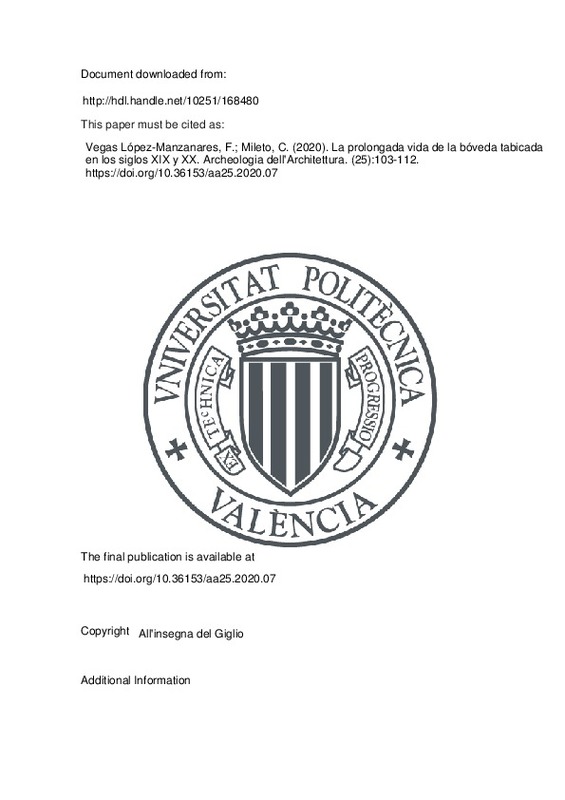JavaScript is disabled for your browser. Some features of this site may not work without it.
Buscar en RiuNet
Listar
Mi cuenta
Estadísticas
Ayuda RiuNet
Admin. UPV
La prolongada vida de la bóveda tabicada en los siglos XIX y XX
Mostrar el registro completo del ítem
Vegas López-Manzanares, F.; Mileto, C. (2020). La prolongada vida de la bóveda tabicada en los siglos XIX y XX. Archeologia dell'Architettura. (25):103-112. https://doi.org/10.36153/aa25.2020.07
Por favor, use este identificador para citar o enlazar este ítem: http://hdl.handle.net/10251/168480
Ficheros en el ítem
Metadatos del ítem
| Título: | La prolongada vida de la bóveda tabicada en los siglos XIX y XX | |
| Otro titulo: |
|
|
| Autor: | ||
| Entidad UPV: |
|
|
| Fecha difusión: |
|
|
| Resumen: |
[EN] Tile vaulting is an ingenious, fast, lightweight, and inexpensive technique which appeared in the Middle Ages. Unlike other construction techniques
and procedures, it was not abandoned with the advent of the Modern ...[+]
[ES] La bóveda tabicada, una técnica constructiva rápida, ligera y económica surgida durante la Edad Media fruto del ingenio, no se abandonó con el
paso de los siglos como sucedió con otras técnicas y procedimientos ...[+]
|
|
| Palabras clave: |
|
|
| Derechos de uso: | Reserva de todos los derechos | |
| Fuente: |
|
|
| DOI: |
|
|
| Editorial: |
|
|
| Versión del editor: | https://doi.org/10.36153/aa25.2020.07 | |
| Tipo: |
|







![[Cerrado]](/themes/UPV/images/candado.png)


